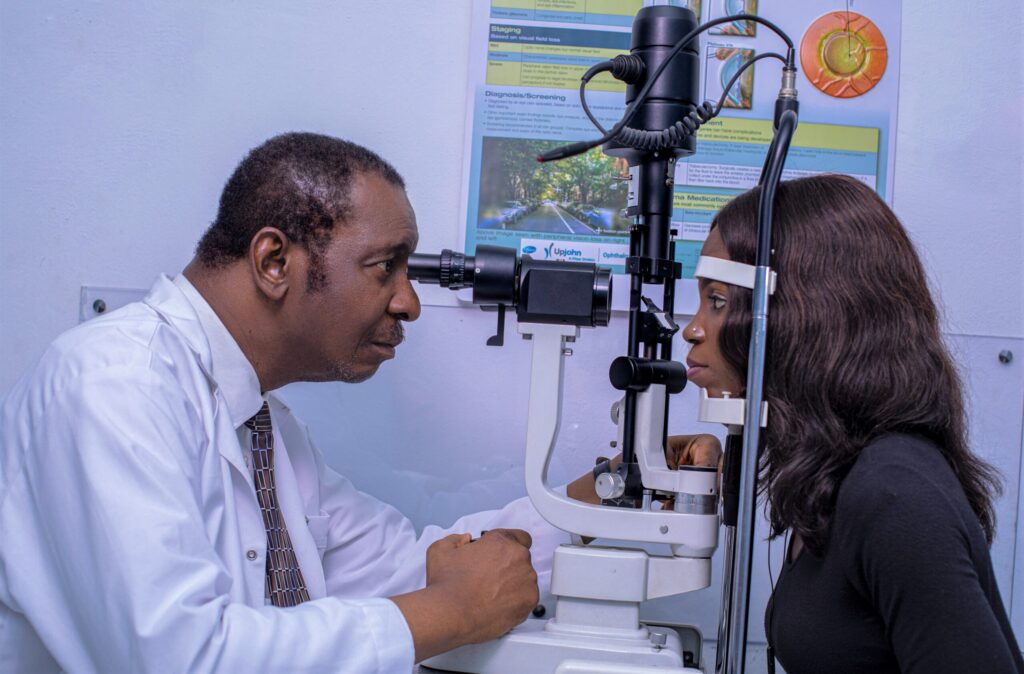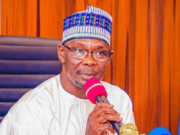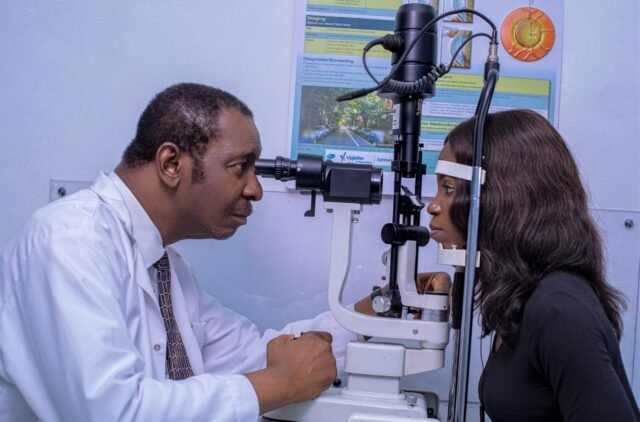In an era where digital innovation shapes every professional sector, Nigeria’s optometry community is rising to the occasion—reimagining their roles, drilling deeper into continuous training, and aligning policies to deliver eye care that meets global standards. This was the central message at the recently concluded 48th Annual Conference of the Nigerian Optometric Association (NOA), where the theme resonated as both timely and transformative: “Optometry in a Changing World: Adapting to Emerging Trends.”
Table of Contents
Leading from the Front: A Call to Action for Optometrists
Dr. Anderson Chimeziri, President of the NOA, addressed attendees with sincerity and urgency. He reminded colleagues that to remain relevant, optometrists must not merely keep pace with technological progress—they must actively steer it. “We are operating in an age marked by rapid technological shifts, evolving global health dynamics, and heightened patient expectations,” he said. “As primary eye care providers, we must lead in embracing cutting-edge innovation to elevate our service delivery.”
The underlying tone was one of professional pride and responsibility. It wasn’t just about adopting gadgets—it was about affirming optometrists’ role as indispensable fixtures in the broader health ecosystem.

Regulation and Future-Readiness: ODORBN Speaks
Standing alongside this industry shift, Dr. Obinna Edwin Awiaka, Registrar and CEO of the Optometrists and Dispensing Opticians Registration Board of Nigeria (ODORBN), echoed the urgency of staying relevant. He underscored the regulatory body’s commitment to empowering practitioners through updated guidelines, improved training, and a forward-looking focus on ethics, technology, and integration with public health frameworks.
ODORBN, he assured, is not lagging behind. The board will revise its regulatory framework to mirror contemporary realities and prepare Nigeria’s optometrists for a healthcare landscape increasingly driven by digital tools.
Government Endorsement and Policy Backing
The presence of a representative from the Federal Ministry of Health lent the gathering a resounding layer of legitimacy. Delivered through Professor Azubuike Onyebuchi of FMC Umuahia, the goodwill message affirmed the government’s backing of NOA’s tech-forward mission. Eye care, the speaker noted, is integral to the government’s strategy for universal, quality healthcare.
The focus is clear: integrate optometry fully into Nigeria’s wider health agenda, ensuring that access to quality eye care is not a privilege, but a norm—across all strata and regions of the country.
Abia State Leads the Charge
On the home front in Abia State, the NOA’s state chair, Dr. Ogbonna Onyedikachi, pointed to concrete leadership that sets a benchmark for others. He commended Governor Alex Otti for pioneering the Abia State Eye Health Management Bureau—a visionary initiative that institutionalises eye care as a key component of public health.
Dr. Onyedikachi painted a glowing picture: in less than three years, the state has invested heavily in healthcare facilities, infrastructure, and human capital—the kind of strategic action that moves eye care from the margins to mainstream health policy.

What All This Means for Eye Care Delivery
This convergence of vision, regulation, and governance signals a pivotal shift in Nigeria’s eye health landscape. Here’s what it all translates into for practitioners and patients alike:
1. A Digitally Enabled Practice
With ODORBN championing Digital Transformation in Eye Care, expect optometry clinics to adopt:
- Electronic patient records and appointment systems that enhance workflow and reduce errors.
- Telehealth platforms for remote consultations—especially vital in underserved regions.
- Diagnostic tools such as OCT (Optical Coherence Tomography), AI-assisted retinal analysis, and automated refraction systems.
These technologies are no longer optional—they’re foundational to delivering accurate, efficient, and accessible eye care.
2. Lifelong Learning and High Ethical Standards
“Continuing Professional Development, Workforce Development, and Ethics” form a triad that will define the next generation of optometric excellence.
- Clinics will increasingly upload training, webinars, and peer-learning sessions.
- Regulatory assessments will reflect both clinical competence and ethical practice.
- National conferences and online courses will become standard, endorsed by ODORBN and NOA.
3. Embedding Eye Care in Public Health
By positioning optometry as central to primary healthcare, the sector opens doors to:
- Training community-level healthcare workers—like CHEWs—to screen and refer patients.
- Integrating vision checks into routine health outreach programmes.
- Leveraging teleophthalmology and mobile clinics to reach remote populations with preventive and diagnostic services.
4. Collaboration for Scale and Sustainability
The proactive stance of government, regulatory agencies, and professional bodies speaks to a deeper synergy.
Together, they will facilitate:
- Access to financing and incentives for clinics adopting new technologies.
- Crafting inclusive policies that encourage innovation without compromising standards.
- Scaling pilot projects—like digital screening tools or mobile eye clinics—across states.

A Glimpse into the Future
If carried through effectively, the combined efforts of NOA, ODORBN, and the government will catalyse eye care transformation. Picture a clinic in rural Zamfara equipped with AI-enabled screening tools. Imagine people in Bayelsa accessing optical consultations via telehealth. Visualise optometrists offering care that is as precise, empathetic, and tech-savvy as global counterparts.
This is not wishful thinking—it’s the tangible future Nigeria’s eye care professionals are charting today.
Join Our Social Media Channels:
WhatsApp: NaijaEyes
Facebook: NaijaEyes
Twitter: NaijaEyes
Instagram: NaijaEyes
TikTok: NaijaEyes








































